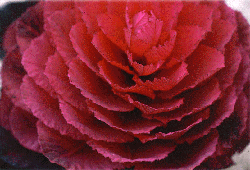
Art is used to express one's culture. The early stages of art were expressed though drawings as means of communication. Such art was formed on rocks, buildings, and pottery. Today we are able to see how art is involved with everyday life.
Art has shown the spirituality of Islam. For example, the art of the Islamic world reflects its cultural values. But most importantly, the way in which its adherents, the Muslims, view the spiritual realm, the universe, life, and the relationship of the parts to the whole. Islamic art consists of calligraphy, geometric and floral forms. For the Muslims, reality begins and centers around God ("Allah" in Arabic), the One, the Unique, the Sovereign, the Holy, the Almighty, the all-knowing, the Loving, the Most Merciful. All existence is subject to His will and His laws. He is the focus of their lives.
In the Islamic view, God is the Ultimate Reality. He creates the cosmos, both what is known and unknown to man. The art of Islam has taken a variety of forms throughout the history of Islam and the Islamic world, such as the countries of Arabia to Asia to North Africa. Islamic art has stretched across in different parts of the Muslim world, to local customs and conditions. Islamic architecture and decorative arts are still very much valued in many parts of the Muslim world. Handwork, an important aspect of the decoration of mosques and Muslim homes, is respected and loved. The decoration featuring Qur'anic calligraphy is also an important aspect of Islamic art and can be seen on the walls of Mosques.
Arabic is the language of Islam. It is the language of its prophet, Mohammed, in which the Holy Quran, the sacred scripture of Islam, was revealed to him by God. Calligraphy is a highly respected form of art. It is the art of writing. Because of Muslims' profound respect and love for the Quran, the art of calligraphy was developed at an early time to a very high degree. Often the calligraphy is done with decorative motifs, lovingly embellishing what is most sacred and precious. Arabic calligraphy is a symbol representing beauty and power. Through the abstract beauty of the lines, energy flows in and between the lines and words. Islamic geometric design provides the history art, math, and science to combine.
The emphasis in Islamic art is an ornamentation rather than on art; while the names of the producers of the finest works of Islamic art may not have survived, their works have become prototypes and models in which other artists and craftsmen patterned their works. An example is a small pouch embellished with cross-stitch embroidery and ornamented with coins. This pouch holds a small body that cannot be seen. Jordan Bedouin women use this to hold kohl, a natural eyeliner. But keeping with the Muslim tradition, an ordinary brown glass bottle has been given a place of honor in a beautiful embroidered work of decorative art.
Today the finest arts include, rugs found in Turkey, Iran, Syria, Pakistan, India, Egypt and Morocco, where the legacy of Islamic arts remains alive and strong. The art of embroidery and fine crocheting is a favorite hobby for Moslems women. The making of prayer rugs, quilts, clothing, and hand stitching was an art taught especially for decorating the house.
All in all Islamic art is a beautiful type of art. Islamic art is used to express its cultural values. These types of art consist of calligraphy, geometric, and floral forms. All these forms take part of the values of Islam. I have included some web sights that have wonderful forms of Islamic art, each with its own characteristic.
Written by: Basima Mashni
Designed by: Svetlana Lutsker
Page design by Svetlana S. Lutsker
(Basic Design, City College of San Francisco)